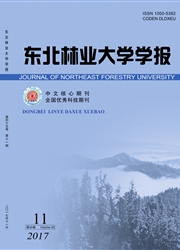

 中文摘要:
中文摘要:
对吉林省左家自然保护区内的4种次级洞巢鸟巢资源竞争与其在群落中的优势度进行了研究。结果表明:大山雀(Parus major)各巢洞因子的生态位最宽、优势度最大,其后依次为普通鹤(Sitta europaea)、白眉姬鹋(Ficedula zanthopygia)以及沼泽山雀(Parus palustris)。4种次级洞巢鸟的优势度与巢洞因子的生态位宽度显著相关,说明其对巢资源的竞争可能影响次级洞巢鸟在群落中的繁殖优势度。
 英文摘要:
英文摘要:
We studied the effects of nest resource competition on breeding dominance in four secondary cavity-nesting birds at Zuojia Nature Reserve in Jilin Province. The niche breadth of nest cavity factors in Great Tit (Parus major) were the widest, followed by Eurasian Nuthatch ( Sirra europaea) , Yellow-rumped Flycatcher ( Ficedula zanthopygia) and Marsh Tit ( P. palustris). Breeding dominance of Great Tit was the highest, followed by Eurasian Nuthatch, Yellow-rumped Flycatcher and Marsh Tit. The breeding dominance was correlated positively with niche breadth of nest cavity factors in four secondary cavity-nesting birds. The nest resource competition could influence breeding dominance of secondary cavity-nesting birds within community.
 同期刊论文项目
同期刊论文项目
 同项目期刊论文
同项目期刊论文
 期刊信息
期刊信息
